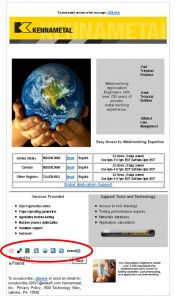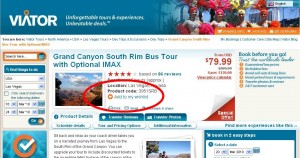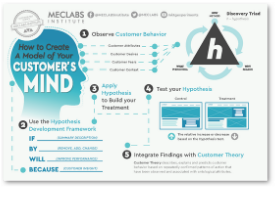Why create a series of six related email messages when one will do? To increase your response and ROI, that’s why!
This is just one topic we cover in the MarketingSherpa Email Essentials 2010 Workshop Training, taking place in 10 locations around the United States; the next one is March 25th in New York City.
With average open rates in the 20% range and average clickthrough rates in the single digits, only a fraction of your list is likely to open, click on or convert from a single email message. If you send a series of messages over a period of time, you’ll increase your reach.
That was the logic behind a series of email messages I developed for a client last year; we sent six email messages over the course of about 12 weeks. But the magnitude of the increased reach amazed even us.
Open rates were pretty much consistent from send to send, but when we looked specifically at who was opening, we found that we picked up new people after each send:
– Our unique cumulative open reach increased an average of 11% with each send in the series
– The second send increased our unique open reach by 31%
– Even with diminishing returns, the sixth send increased our unique open reach by 6%
In the end, cumulative unique open reach was 95% higher than the open rate on the first email alone, meaning that the last five efforts nearly doubled the number of people that were exposed to the campaign.
The same was true for our unique clickthrough reach:
– Our unique clickthrough reach increased an average of 20% send-over-send
– The second send caused our unique clickthrough reach to grow by 63%
– Even the sixth send provided a 10% lift in unique clickthrough reach over the five earlier efforts
Our final cumulative unique clickthrough reach was 236% higher than the clickthrough rate on the first email; over the course of the campaign more than three times the number of people that clicked on the first email interacted with us.
But the real success story is about what happened to clickthrough on the key call-to-action link:
– Unique clickthrough reach increased an average of 25% send-over-send
– It more than doubled (a lift of 105%) after the second send
– The last email sent provided a 7% increase in our cumulative unique clickthrough reach on this key call-to-action link
When all was said and done, the cumulative unique clickthrough reach on this key link was nearly five times that of the clickthrough rate the link garnered in the first send, a lift of 392%.
Developing a Strategic Email Series
A strategic email series is different than a straight resend. Rather than send the same message over and over again, you craft a “message map” and use it to develop different content all focused on the same goal or offer.
Email series can be used effectively in a number of ways:
– Welcome Campaigns
– Reactivation Programs
– Lead Nurturing Initiatives
– Event, Product or Service Promotions
– Top of Mind Initiatives
Email series allow you to present much more information that you could in a single email. They give you the opportunity to build the case for your brand, product or service over time, while building a relationship with your readers.
The best part of many email series, especially welcome campaigns and lead nurturing initiatives, is that while they take some time and effort to create, they are evergreen. They can be used, without major changes, for years to come since they’ll be sent to different people on an ongoing basis.
Have you had success with an email series? If so, please share your experience in the comments of this blog and let’s get a discussion going!
Editor’s Note: Jeanne Jennings is teaching MarketingSherpa’s Email Essentials Workshop Training in 10 locations around the country this year; the next one takes place in New York City on March 25th. She’ll be blogging about the course material and her experiences during the tour. We’re excited to have her on board and contributing to the blog.













